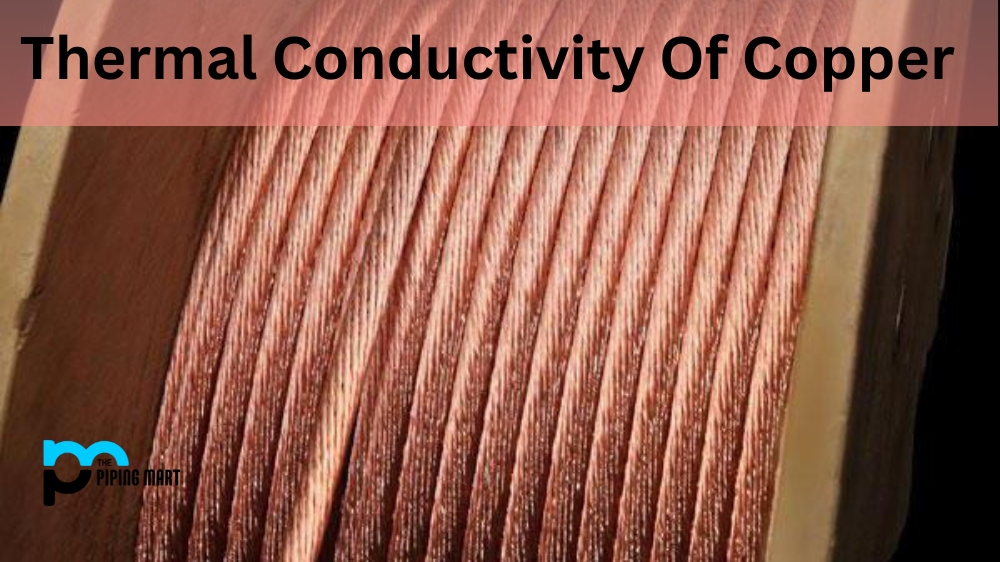Understanding the thermal conductivity of a material is essential in many engineering applications, and copper is one of the most widely used materials due to its excellent properties. Copper has an extremely high rate of heat transfer that ensures it can take heat away from components rapidly, helping to keep them under safe operating temperatures. In this blog post, we’ll discuss why the thermal conductivity of copper makes it such an ideal choice for numerous industrial tasks, from electrical wiring to power transmission systems. We’ll also explore how engineers select which type and grade are best for a given application based on their unique requirements.
What is thermal conductivity?
To understand the term thermal conductivity, we must first understand what conductivity is. We’re talking about a material’s thermal conductivity or its ability to conduct heat. It is commonly represented by “k.”
Fourier’s Law for heat conduction defines thermal conductivity as q = -kT, where q is the heat flux, k is the thermal conductivity, and T is the temperature gradient. The most general form of thermal conductivity is a second-rank tensor, which is commonly expressed as a scalar. Despite this, the tensorial description is only required in anisotropic materials.
What Do You Mean By The Thermal Conductivity Of Copper?
Most of us know that elements are classified as metals or non-metals. Because most metals are lustrous, shiny, malleable, ductile, and complex by nature, their appearance makes them easy to identify. Non-metals, on the other hand, are brittle and neither malleable nor ductile.
The periodic table currently shows metals on the left and non-metals on the right. There is an imaginary line in the table where the elements exhibit metal and non-metal properties, which are referred to as metalloids. Copper has been known to humanity for thousands of years and is one of the most well-known metals in our lives.
Thermal Conductivity of Copper
| Material | Thermal conductivity
(cal/sec)/(cm² C/cm) |
Thermal conductivity
(W/m K)* |
| Copper | 0.99 | 385.0 |
Copper is well-known for its ability to conduct electricity and heat. This occurs because delocalized electrons within solid metal lattices have the freedom to move freely within their lattice. These would act as heat and electric charge transporters from one end to the other, transforming the metals into good conductors.
Different Methods To Test Out The Thermal Conductivity Of Copper
Transient Methods
The transient hot wire method(THW) is a very accurate, popular, and precise technique to measure the thermal conductivity of gases, liquids, solids, nanofluids, and refrigerants in a wide temperature and pressure range. The method is based on recording the transient temperature rise of a thin vertical metal wire with infinite length when a step voltage is applied to it. The wire is immersed in a fluid and can act as an electrical heating element and a resistance thermometer. The transient hot wire method has an advantage over the other thermal conductivity method since there is a fully developed theory and no calibration or single-point calibration. Furthermore, because of the minimal measuring time (1 s), there is no convection present in the measurements, and only the thermal conductivity of the fluid is measured with very high accuracy.
Steady-state Method
In general, steady-state techniques are used when the temperature of the material being measured does not change over time. As a result, signal analysis is simple (steady-state implies constant signals). The only disadvantage is that a well-designed experimental setup is usually required.
Conclusion
Copper has a high thermal conductivity rating, meaning it is an excellent conductor of heat. This makes it ideal for use in applications where heat needs to be transferred quickly, such as in cookware and radiators. When shopping for copper products, be sure to check the thermal conductivity rating to ensure you are getting a quality product.

Pipingmart is a B2B portal that specializes in metal, industrial and piping items. Additionally, we share the latest information and information about materials, products and various types of grades to assist businesses that are involved in this business.




